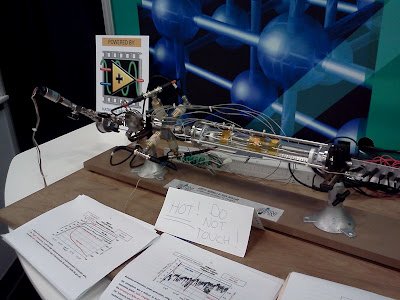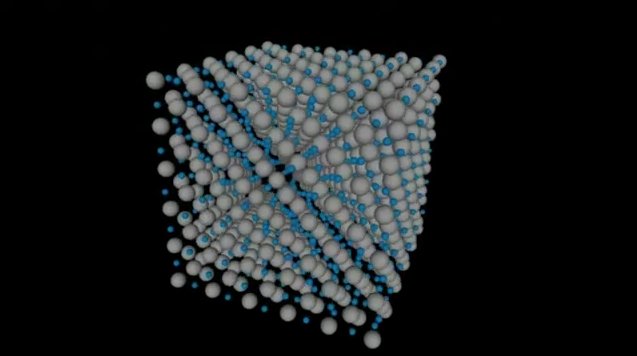Several months ago, I posted an article asking the question Can Defkalion Survive the Greek Crisis? To summarize, I explored the obstacles that Defkalion Green Technologies faced starting a commercial enterprise in a country in the midst of economic turmoil and rising social unrest. This would certainly be problematic for any new enterprise, but especially so for a company seeking to commercialize an entirely new technology. Aside from the technical and logistical challenges, I also raised the question of whether Defkalion would be able to attract sufficient investment in a chaotic economic, social and political environment. If investors are fond anything, aside from making a profit, it is stability. Investment involves enough risk in and of itself, and this risk need not be exacerbated by economic and social turmoil.
Apparently this line of thought was also contemplated by Defkalion management, as on July 18, 2012 company representative George Xanthoula sent out an e-mail outlining Defkalion’s plans to leave Greece and set up operations elsewhere. The reasons given for this move were very similar to those mentioned above. Australia, Canada and Switzerland were mentioned as possible sites of relocation.
At the National Instruments-sponsored NIWeek in August, Defkalion CEO Alexander Xanthoulis announced that there would be offices in both Vancouver, British Columbia, Canada and Zurich, Switzerland, with the Vancouver office serving as the primary base of operations. It was not made clear why Canada was chosen as Defkalion’s new base of operations, but Mr. Xanthoulis is described in company literature as being a Greek-Canadian, so his roots in that country may have been a factor. In August, a company representative stated the Vancouver office would be open this month, although no specific date was given.
While waiting for official commencement of operations in Canada, Defkalion has continued to do testing in Greece on their Hyperion cold fusion reactor. In a message on the Defkalion discussion forum, the company announced it had conducted two official test runs on its reactor from September 5th to September 14th. These tests were reportedly conducted in Greece on its R5 prototype, and testing is scheduled to begin soon on its R6 pre-industrial reactor at the Vancouver facility. In that same message, a Defkalion represented wrote: “An official announcement from our company within the next weeks will inform you of the peer-reviewed journals where the results of all these tests so far will be published by the independent testers.”

If indeed Defkalion testing has been submitted for peer-review, and these results will soon appear in peer-reviewed journals, this would be a very positive development. Failure to release independent testing results, after public announcements in February of this year raised expectation of such, led many to question the validity of Defkalion claims about its Hyperion reactor. However, reports that have filtered out about the testing results have served to buoy confidence in the Hyperion in some quarters. Those who are privy to information that most of us are not, have much less doubt about the Hyperion and Defkalion’s claims regarding it. Although, even among this group, there remain some questions regarding the device’s stability. The company gave presentations at both NIWeek and ICCF-17 but they did not provide any new information, save for the location where their base of operations was being moved. Hopefully, the coming weeks and publication of independent testing results in peer-reviewed literature will answer many lingering questions.
Yet, as Defkalion settles into its new surroundings, they have more to be concerned about than providing definitive proof to the faithful and silencing critics and detractors. Certainly they have escaped the chaos in Greece but Canada has its own native dangers with witch company officials need to contend. First of all, Western Canada is home to one of the fiercest predators in the wild, the grizzly bear. Company employees would be advised to keep trash can lids firmly secured and their facilities locked at night. Vancouver may be a bustling metropolis, but it is an oasis in the midst of a vast wilderness. Grizzly bears do not respect no trespassing signs or city limits. There is a reason the city named its NBA basketball team after them.

The second resident of Western Canada that Defkalion must concern itself with is the powerful and influential Canadian oil industry. Canada is the sixth largest oil producing country in the world, and is the primary source of oil imports into the United States. The bulk of Canadian oil exploration and production is in the Western Canadian provinces of Alberta and British Columbia.
Defkalion may also soon have to contend with Chinese oil interests. CNNOC, a state-owned Chinese oil company, is currently in negotiations with the Canadian government to buy the Canadian oil company Nexen for a reported price of $15.1 billion. If approved by the government, this purchase would be the largest purchase of a Canadian energy asset by a Chinese company, and the largest single purchase by a Chinese company of a foreign asset. This deal is expected to be approved by the Canadian government, despite concerns amongst some Canadians in regard to allowing a state-owned Chinese enterprise to own such a large stake in their domestic oil industry.
A cold fusion optimist might conclude that some in the Canadian government are aware of the arrival of Defkalion on their soil and the promise the Hyperion offers for the future of energy. As a result, officials may be obliged to allow the Chinese to spend billions of dollars on an asset whose value may be greatly diminished in the not too distant future. Many others may simply conclude that this deal is about oil, cold hard cash and maybe even political influence, but not related to cold fusion or Defkalion in any way.
Defkalion may have flown into Canada under the radar because the results of independent testing of the Hyperion have not yet been made public. Perhaps that was part of the rationale for delaying publication. Jed Rothwell, cold fusion historian and administrator of the lenr-canr.org cold fusion library, wrote several months ago that the results of independent testing were being kept under wraps “for good reason.” I think avoiding the scrutiny of the oil industry in Canada, at least for a time, would qualify as a good reason.
If the independent verification of Defkalion claims are soon published in peer-reviewed scientific journals, Defkalion’s warm Vancouver welcome may turn as cold as a Canadian winter. By the same token, if Defkalion continues to make bold claims without the appropriate corroborating evidence, the Canadian government may scrutinize Defkalion a little more closely then the Greek government did while the company was in Greece.
When Defkalion broke with Andrea Rossi in August of last year, they publicly warned Rossi about the perils of “going it alone.” Ironically, a year later, they may be seen as doing just that. They are in a new country, with new laws, sharing a province with a powerful and prosperous industry that could be made irrelevant by their technology. Yet, Defkalion management has already proven adept at navigating difficult waters in the last year. They managed to engineer their own cold fusion cell after their abrupt break with Andrea Rossi left them without the core technology, the loss of their chief scientist as a result of that break, and escape from an imploding nation…and those are just the difficulties that have been made public. If one adds to the above that the Hyperion is reportedly the most robust cold fusion reactor currently being developed, this company has a lot working in its favor…I mean our favor.
I look forward to independent confirmation of Hyperion performance being made available to the public.




